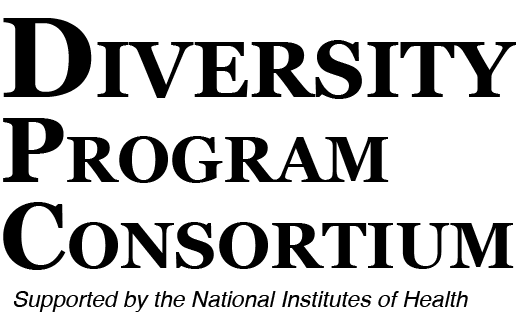



September 2018
Science identity represents the extent to which students conceive of themselves as scientists and is one of the hallmarks of the NIH Diversity Program Consortium (DPC).a Data from the 2017 Student Annual Follow-up Survey (SAFS) indicates that BUILD students in biomedical majors have a higher average science identity score than non-BUILD biomedical students at the same institutions. The higher science identity among BUILD students occurs for most racial/ethnic groups and for all items in the science identity scale. Given the importance of science identity to continuing on the biomedical career pathway, these results suggest that BUILD students are more likely to persist in science majors and careers than other biomedical science students at their institutions.
According to Carlone and Johnson,1 science identity is affected by one’s gender, racial, and ethnic identities and is the result of an interplay of three factors: competence, performance, and recognition. A student’s competence in science is based on having knowledge and understanding of science content, whereas performance is being able to engage in a social display of relevant scientific practices (e.g., ways of talking about science or using tools appropriately). Finally, science identity is tied to recognition of oneself or getting recognized by others as a “science person.”1
Research shows that an individual student’s success can be affected by social factors that shape their access to opportunities and the institutional structures and normative contexts that determine where students attend school and how they progress.2 In addition, cultural and gender norms are inherent in science fields, with a culture that is characterized by white, masculine values and behavioral norms. In these fields, underrepresented minority (URM) students may be deterred in establishing a science identity. Therefore, understanding the extent to which interventions help different groups of students identify as scientists may be a critical component in understanding their success in their undergraduate science trajectories and beyond.1,3
The BUILD initiative is designed to determine the most effective ways to engage students from underrepresented backgrounds in biomedical research, helping them progress on the pathway to become potential future contributors to the NIH-funded research enterprise. Of the 489 BUILD students who completed the 2017 Student Annual Follow-up Survey (SAFS), approximately 44% were Hispanic, and 77% identified as being part of any URM group.4 Approximately 86% of BUILD students had majors in the biomedical sciences.5 Twenty percent of all non-BUILD students (n=4,882) were Hispanic, and 49% identified as any URM. Fifty-eight percent of non-BUILD students had majors in biomedical sciences. Non-biomedical science majors identified as BUILD students included studies in political science and arts but are not included in subsequent analyses.b
The average science identity score for all BUILD biomedical science students was 61.9 compared to 56.1 for non-BUILD biomedical students (Table 1; minimum=30, maximum=70). Science identity in this dataset was rescored so that the mean for all respondents combined from the BUILD sites is 50 with a standard deviation of 10. The scores for both BUILD and non-BUILD groups were higher than the normalized mean of 50 (standard deviation=10), indicating that biomedical students who took the SAFS 2017 survey had a higher than average science identity than all survey respondents, which included nonbiomedical students.
BUILD students’ scores also surpassed those of their ethnic/racial non-BUILD peers in biomedical majors. Simple cross-tabulations show the average science identity scores for those in biomedical majors is higher for all BUILD students than for all non-BUILD students. BUILD students who identfied as Hispanic, Black, White, or other URM had statistically significant higher science identity scores than non-BUILD biomedical students of the same race/ethnicity (Table 1).



BUILD biomedical majors include natural & life sciences, and related engineering (Biomedical Natural Sciences), and social & behavioral sciences (Biomedical Social Sciences).5 Figure 1 shows that science identity was higher for BUILD students than non-BUILD students in both types of biomedical majors. All results were statistically significantly different, showing that the higher science identity scores of BUILD students are consistent across different types of majors.
The science identity construct is calculated based on responses to four survey items. The majority of BUILD biomedical science majors have a sense of satisfaction conducting important research (93% agreement or strong agreement), and feel they belong in a science field (86%). Three-quarters of BUILD students consider themselves as scientists (77%) and feel that they belong in the community of scientists (74%). The level of agreement on each of these measures exceeded those of non-BUILD biomedical majors (Figure 2).
On all scores and survey items, BUILD students have greater science identity than their non-BUILD peers, even when limiting the comparison to only biomedical majors. Each BUILD site has a set of programs to foster and sustain science identity as one element in a set of activities designed to foster student success in biomedical research careers. This cross-sectional analysis cannot identify whether the higher levels are the result of BUILD activities, or preferential selection into the BUILD program, but it does provide a baseline against which the DPC can longitudinally assess how well sites promote and sustain science identity, and the extent to which improved science identity leads to greater graduation in biomedical majors and entrance into biomedical graduate schools.
The SAFS 2017 was administered online to students at BUILD sites who had previously completed the Higher Education Research Institute (HERI) freshman survey or participated in any BUILD sponsored activity. There were 5,371 survey respondents, 489 (9.1%) of which were identified by institutions as BUILD program participants (primarily recipients of BUILD funding). Three hundred and eighty BUILD students and 2,469 non-BUILD students identified themselves as current biomedical science majors. Table 1 depicts BUILD (n=346) and non-BUILD (n=1834) students who identified their race/ethnicity.
The DPC is determining the effectiveness of innovative approaches to engage individuals from diverse backgrounds and help them prepare for and succeed in biomedical research careers. It supports transformative approaches to student engagement, research training, mentoring, faculty development, and infrastructure development.
Building Infrastructure Leading to Diversity (BUILD) consists of a set of 10 linked awards granted to undergraduate institutions, each of which developed approaches intended to determine the most effective ways to engage students from diverse backgrounds in biomedical research, and to prepare students to become potential future contributors to the NIH-funded research enterprise.
BUILD is one of three initiatives within the DPC. For further information see: https://www.diversityprogramconsortium.org/pages/nih
aScience identity is a DPC Hallmark, PSY-I1. See also www.nigms.nih.gov/training/dpc/Pages/success.aspx
b The SAFS includes those who were ever BUILD students, even if they changed their majors or were otherwise not BUILD students at the time of the survey.1Carlone HB, Johnson A. Understanding the science experiences of successful women of color: Science identity as an analytic lens. Journal of Research in Science Teaching. 2007; 44(8):1187- 1218.
2Chang MJ, Eagan K, Lin MH, Hurtado S. Considering the impact of racial stigmas and science identity: Persistence among biomedical and behavioral science aspirants. Journal of Higher education. 2011; 82(5), 564-596.
3Williams MM., George-Jackson CE. Using and doing science: Gender, self-ef cacy, and science identity of undergraduate students in STEM. Journal of Women and Minorities in Science and Engineering. 2014; 20(2):99-126.
4https://grants.nih.gov/grants/guide/notice-files/NOT-OD-18-210.html.
5DPC biomedical science majors are listed at: www.diversityprogramconsortium.org/pages/biomedical_majors_list
6Estrada M, Woodcock A, Hernandez PR, Schultz PW. Toward a Model of Social Influence that Explains Minority Student Integration into the Scientific Community. Journal of educational psychology. 2011;103(1):206-222.
This data brief is published by the Diversity Program Consortium’s Coordination and Evaluation Center (CEC) at UCLA.
info@diversityprogramconsortium.org
Brief #2018-01
